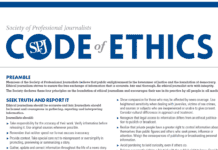What makes art beautiful and who decides what fine art is and what makes fine paperweights? I’ve had seemingly endless debates on this subject throughout the course of my life. Too often, artists and non-artists look at a painting and say, “My three-year-old could paint that.” Then there are also those three-year-olds who have been dubbed creative geniuses who finger paint in the style of Picasso and the magnitude of Michelangelo. Art is most certainly subjective, but to whom?
As artists, we depict what we feel or have become familiar with through the subject of our art. It often isn’t exactly what we see; rather, it is what we feel. When we paint, sketch, or sculpt, we are giving meaning to something we want others to perceive. It is our journey and our vision. However, each of our experiences differs from others; therefore we react to an artist’s depiction by bringing our own interpretation to the table. It’s great to understand why the artist created their particular piece and what motivated the direction of their work, but it is equally important to understand why it impacts us the way it does.
Art is an idea to build on. It lives on long after the artist has passed and can be the subject of countless debates, theories, theses and coffee-table discussions. Sometimes the artist’s original interpretation will never be known, but the work will be left to the beholder. It’s times like these that we should relish, because now the art is in fact left for us: the individuals. We have the honor of then truly experiencing a work that has no pre-attached defining quality. Instead of being told what to feel and what to see – we can experience what we feel and what we see for ourselves.
And above all, it is important not to criticize a work of art, but to experience it, to learn from it and enjoy or hate it all the same. Sure, you don’t like that painting or sculpture. It can be horrendous or insulting and offensive yet somehow sublime. This doesn’t necessarily make it ‘bad’ art. Perhaps the artist was in fact, trying to create that shocking or offensive reaction. The truth is, it’s truly hard to say what’s good and bad in the art world. Oh, here it comes – the flurry of emails discussing color, technique, the elements and principles of design and how I’m wrong. But that’s okay! As an artist I always welcome critiques and disparate opinions. I understand that we’re all different, but we’re still connected (even if it is by our opposing views).
Be kind, understand yourself and absorb what you feel, see and touch when experiencing art. Don’t be too quick to judge or label a work as ‘bad’, but take a moment to at least be ‘aware’ of the work before you. The message behind that particular piece might just be the reaction you take with you. Remember that artists are sharing a part of their soul so tread softly at first, before trampling. What you hate may in fact be loved by others.
Remember: grow; learn; conserve; preserve; create; question; educate; change; and free your mind.
About: Kelli Klymenko is an artist, a faculty member and the Marketing & Events Coordinator at Sedona Arts Center: a gathering place where artists can learn, teach, and exhibit their works at the center’s School of the Arts and Fine Art Gallery in uptown Sedona.

















